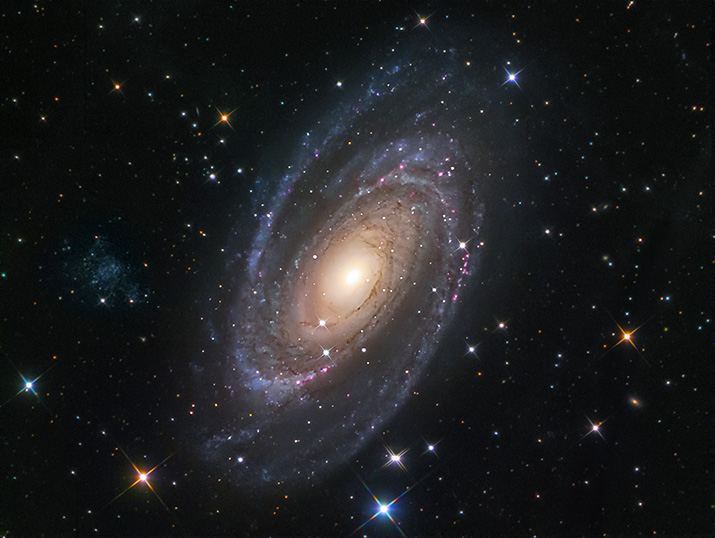
| Date: April 4-5, 2022 - Location: Davis Mountains west of Fort Davis, TX Guided using Innovations Foresight On Axis Guider (ONAG) Click on the image to view at higher resolution. |

| Discovered by Johann Elert Bode in 1774. M81, also known as Bode's Galaxy, is located in the constellation of Ursa Major and is approximately 12 million light years distant. It is relatively bright with a total visual magnitude of 6.8 and can be viewed easily with most amateur telescopes. M81 is a large spiral galaxy and is the dominant galaxy of the M81 group. M82 is a smaller galaxy located only about 150 thousand light years from M81. In the relatively recent past, in astronomical terms, the two interacted gravitationally as they passed in close proximity. M82 apparently was the "loser" in this encounter and was disrupted to a greater extent by M81's much larger gravitational mass. The mass of the central black hole in M81 has been determined to be approximately 70 million solar masses3. This is about 15 times that of the Milky Way's central black hole. Located just to the left of M81 is the satellite galaxy Holmberg IX. This small irregular dwarf galaxy is an interesting celestial object. It has been the study of several scientific papers. The Hubble Space Telescope was able to resolved over 20,000 individual stars in the galaxy. Analysis of the stars found that only about 10% were old stars. The age of the majority of the stars is only 10 to 200 million years. It is postulated that these new stars were formed from tidal debris resulting from the close encounter with M82. Member of the Dark Sky Observatory Collaborative 1http://www.messier.seds.org/m/m081.html |